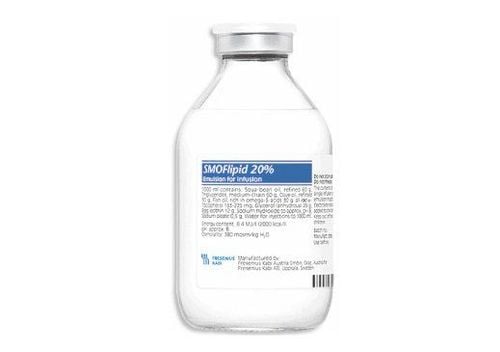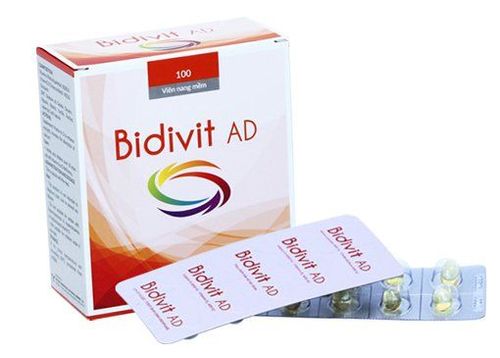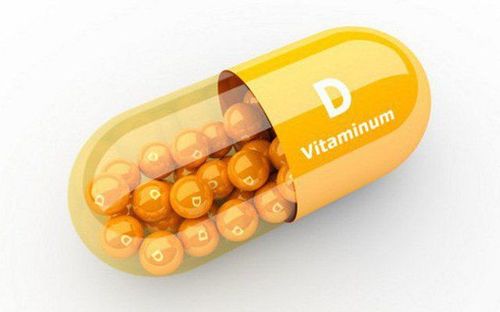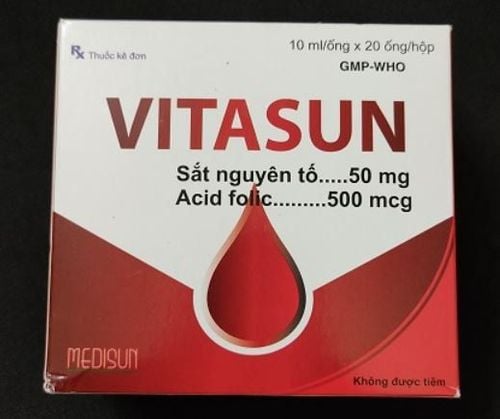This is an automatically translated article.
According to the announcement from the Center for Nutrition Examination and Consulting, rickets is a common condition and tends to increase in recent years. Not only children in areas with little exposure to the sun have this condition, but many children in urban areas who do not receive proper care also have rickets.
1. Overview of rickets in children
In the past, rickets in children were common in highland children because the living environment was quite humid, the sunlight was weak, there was a lot of fog, so it was difficult to have the opportunity to be exposed to good sunlight in the early morning. However, not only children in mountainous areas but also children in urban areas and other areas are still at high risk of rickets. Currently, most children are carefully wrapped by their parents, rarely allowed to go out, so their exposure to sunlight to synthesize vitamin D is also limited.
Rickets is a fairly common disease in children in Vietnam, but many parents in our country are still confused between rickets and malnutrition.
Malnutrition occurs in children who are severely undernourished, resulting in a loss of height or weight when compared to children of the same age. Rickets often has a common manifestation of bone dystrophy due to vitamin D deficiency, affecting calcium and phosphorus absorption metabolism right in the period of bone development. Rickets has a great influence on the baby's physique later, limiting body development and can deform bones.
2. Causes of rickets in children
As mentioned above, rickets in children is caused by a deficiency of vitamin D during development. Vitamin D is an essential nutrient for metabolism as well as supports the easy absorption of calcium and phosphorus in the body, thereby helping to strengthen bones and maintain the stability of the bone structure at an appropriate level.
According to studies, not providing enough vitamin D for babies in the early stages of life is often due to the following reasons:
Less exposure to natural sunlight: Many parents are concerned about being outdoors in the sun. For a long time, the baby will be stunned and sick. Therefore, despite the tropical climate, our country is still in the area of many children with rickets due to little exposure to sunlight. Diet lacks nutrients: In today's weaning menu, many mothers still only care for their children's health. I eat a lot of protein, starch, calcium, ... but forget that vitamin D is needed to metabolize and absorb calcium and phosphorus for bones, helping bones develop. That's why many children, despite getting enough calcium, due to lack of vitamin D, their growth is still limited, leading to rickets in children Completely dependent on breast milk: Breast milk is essential for children in the first year. Life, but mothers should also know that vitamin D in breast milk is very little and only provides a part of the baby's daily needs. Other causes: In addition, rickets can also be seen in children with digestive disorders for too long than usual, infections, premature birth, age (the younger the child, the higher the risk of rickets). .

Trẻ còi xương là do việc thiếu hụt vitamin D trong giai đoạn phát triển
3. Common signs in children with rickets
Head part: Hair grows in a turban style, there is a hump on the top of the head and forehead making the head bigger, the bones have signs of softness, the front fontanel is wide, the margin is soft, there is a delay in teething, the teeth are often decayed, growing. Out of order Body: Chest a bit like a chicken's breast, anemic blue skin. C-shaped legs or like bows. Slow to walk and sit compared to children of the same age Psychological manifestations: The baby often tosses, has trouble sleeping, vomits, often cries, sweats a lot during the day. Every meal children show anorexia Symptoms of rickets , more severe stunting has been recorded as convulsions because of hypocalcemia .
4. What do children with rickets need to supplement?
"What to supplement with stunted children" is a matter of concern to parents when they find out that their child has this condition. It is important for parents to stay awake and consult with qualified doctors to have an appropriate treatment. Vitamin D can be provided to the child's body in the following ways:
Sunbathing properly: This is a simple, free and effective way for children with rickets. Every day, mothers only need to expose their children to sunlight before 8:00 am and about 10-15 minutes is enough. When sunbathing, it is necessary to expose the abdomen, back, arms and legs, exposed to sunlight to synthesize vitamin D Regular milk supplementation: Breast milk is one of the good sources of nutrition for children, so it is advisable to give it to children. children drink milk every day, if the mother does not have enough milk, you can use extra milk under the advice of a nutritionist. Give the child vitamin D and calcium: It is also a good way, but it is necessary to go through a doctor to make sure safe for baby. If the mother does not follow the medical instructions, but uses it arbitrarily, it will easily cause an excess of vitamin D, adversely affecting health. Supplementing vitamin D from food: In addition to the above ways, the addition of vitamin D and calcium through food is also recommended by health experts.

Tắm nắng đúng cách giúp cải thiện tình trạng trẻ còi xương
5. Foods rich in vitamin D are essential for children with rickets
Food for stunted children, rickets containing natural vitamin D should be prioritized by mothers in the period when the baby can eat solid foods. Vitamin D occurs in many common foods such as:
Seafood such as salmon, tuna and mackerel Whole milk, soy milk and fortified orange juice Plants such as soybeans, cereals Beef liver, Egg yolk Cheese In addition to vitamin D, babies also need to add essential micronutrients such as: Zinc, selenium, chromium, Vitamins B1 and B6, Ginger, acerola fruit extract (vitamin C), ... to improve Improve your taste, eat well, reach the right height and weight, and exceed the standard, have a good immune system, strengthen your resistance to get sick less often and have less digestive problems.
The improvement of symptoms can take place for a long time, so it is recommended that parents be calm and persistent when supplementing with nutrients for children, even through eating or functional foods. In particular, the use of functional foods should choose those of natural origin that are easily absorbed, do not allow simultaneous use of many types or continuously change the types of functional foods.
To have more knowledge about taking care of children by age, you should regularly visit the website vimec.com and make an appointment with the leading doctors, Pediatricians - Nutritionists when you need advice.













